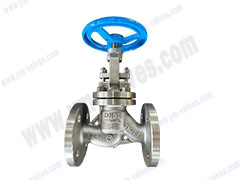-
Pressure Regulating Steps and Main Functions of a Pressure Regulator
-
The core function of a pressure reducing valve is to stabilize upstream high pressure to the required downstream low pressure, while protecting downstream pipelines and equipment. Pressure regulation must follow an orderly procedure of "preparation-adjustment-verification-locking".
1. Main Functions
Pressure Reduction and Stabilization: Reduces fluctuating high-pressure gas/liquid upstream to the stable low pressure required by downstream equipment, preventing excessive pressure or fluctuations from affecting operation.
Equipment Protection: Prevents damage to downstream pipelines, valves, and instruments due to overpressure, reducing safety risks such as leaks and bursts.
Stabilizing Operating Conditions: Provides constant pressure to the downstream system, ensuring the normal and efficient operation of equipment (such as pneumatic tools and hydraulic machinery).
2. Pressure Regulation Steps
Preparation: Confirm that the inlet and outlet valves of the pressure reducing valve are closed, connect the pressure gauge (downstream side), and check that there are no leaks in the pipeline and that the installation direction is correct (the arrow should be aligned with the fluid flow direction).
Initial Adjustment: Slowly open the upstream valve to allow fluid to slowly enter the pressure reducing valve, while the downstream valve remains closed; rotate the pressure regulating knob counterclockwise until there is no pressure output.
Pressure Setting: Slowly open the downstream valve (or run the downstream equipment under no-load), rotate the pressure regulating knob clockwise, and observe the pressure gauge until the required working pressure is reached.
Verification and Locking: Maintain stable operating conditions for 3-5 minutes to confirm that the pressure does not drift; if the pressure is within the acceptable range, tighten the locking nut of the pressure regulating knob (if applicable) to complete the pressure adjustment.




.jpg)
.jpg)
.jpg)